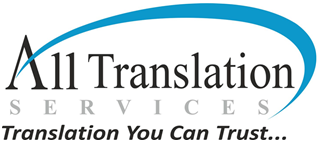The Multilingual Mosaic: How Immigrant Languages Are Shaping Canada's Future
___Multilingual mosaic is not just a testament to Canada’s cultural diversity but is also playing a pivotal role in shaping its future
Canada, with its vast expanse and diverse population, has long been celebrated as a tapestry of cultures and languages. Beyond the official bilingualism of English and French, the country is home to a linguistic landscape that is vibrant, evolving, and increasingly shaped by its immigrant populations.
Looking for a local language translation service provider in Abbotsford, Brampton, British Columbia, Calgary, Canada, or in Edmonton? Our Toronto translation company will be happy to help you.
A Nation of Immigrants
Canada’s immigration policy is one of the most open in the world, welcoming people from every corner of the globe. As these communities settle and grow, they bring with them their languages, which adds new threads to the country’s linguistic tapestry. According to the latest census data, languages such as Mandarin, Cantonese, Punjabi, Spanish, Tagalog, Arabic, and Persian are among the most spoken at home, after English and French. This multilingualism is a reflection of Canada’s changing demographics and its ongoing commitment to multiculturalism.
Economic Impacts
The influx of immigrant languages has profound economic implications. Multilingual individuals are invaluable in the global marketplace, where communication and cultural understanding can make or break deals. Canada’s workforce, bolstered by multilingual immigrants, is well-positioned for international trade and negotiations, giving the country a competitive edge in the global economy. Furthermore, the ability to speak multiple languages is increasingly seen as a valuable skill, opening up job opportunities both within Canada and abroad.
Social and Cultural Integration
The preservation and promotion of immigrant languages facilitate social integration and cultural exchange. Language learning programs and bilingual education models are becoming more common, encouraging not just immigrants but also native-born Canadians to become multilingual. This fosters a society that values diversity, promotes mutual understanding, and encourages a sense of belonging among all its members.
Moreover, community-based language schools and cultural organizations play a significant role in maintaining the heritage and languages of immigrant populations. These institutions are vital for the younger generations, who, while navigating their Canadian identity, also seek to retain connections to their ancestral cultures.
Challenges and Opportunities
Despite the benefits, the multilingual mosaic of Canada faces challenges. Language preservation is a significant concern, particularly for smaller immigrant communities and indigenous languages at risk of extinction. Moreover, there can be barriers to full participation in Canadian society for those who do not speak English or French fluently, highlighting the need for accessible language training and integration programs.
However, these challenges also present opportunities for innovation in language education and policy. There is a growing recognition of the need to support not just the learning of Canada’s official languages but also the preservation and promotion of a wider range of languages. This includes leveraging technology to create more engaging and accessible language learning tools and fostering environments where multiple languages are celebrated and utilized.
Looking Forward
As Canada continues to welcome immigrants, its linguistic landscape will only become more diverse. This multilingual mosaic is a source of strength, making Canada more inclusive, innovative, and interconnected. By embracing and promoting this diversity, Canada is not just preparing its citizens for a globalized world but is also shaping a future where cultural and linguistic diversity is seen as an asset, not a challenge.
In the end, the multilingual mosaic of Canada illustrates a broader truth about the country: it is continually evolving, drawing strength from its diversity, and looking forward with optimism to the future. In this dynamic interplay of languages and cultures, Canada finds its unique identity and prospects for a prosperous future.
